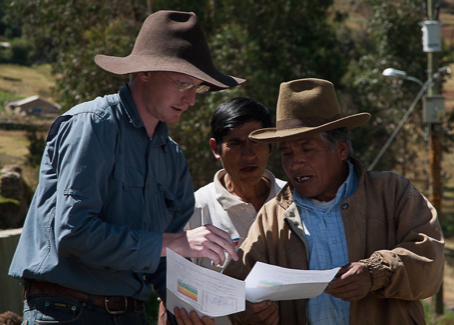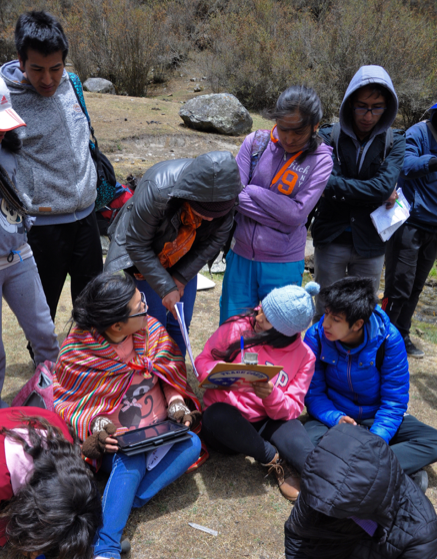
WATER QUALITY APP SUPPORTS LOCAL COMMUNITIES
At the top of the world, in the high Andean mountains of Peru, the effects of climate change on water quality are starting to sink in. As the glaciers retreat, melt water comes in to contact with freshly exposed bedrock, which can lead to higher mineral and even heavy-metal levels in mountain streams. Acidic, metal-laden water isn’t great for irrigation, let alone human consumption. And the issue is only compounded by local agricultural activities, poor sewage infrastructure, and other human caused contamination. Thus, monitoring mountain water quality has become crucial, but conventional physiochemical water testing can be expensive and hard to access.
Nathan Hecht, a 3rd-year extension Peace Corps Volunteer in Peru, is working on a strategy to confront this problem, thanks to The Mountain Institute’s collaboration with USAID on a project called “Securing Mountain Water and Livelihoods.” And he’s doing so using cellphones.
“One way to think about water quality is from a healthy ecosystem perspective. That’s why we’re using macro- invertebrates (aquatic insects and arthropods at the bottom of the food chain) as bio-indicators of water quality. We’ve developed a cellphone App that helps facilitate the process of using macro-invertebrates to determine water quality.”
The backbone of the water quality App, or “ABI Calculator” is the Andean Biotic Index (ABI), a biotic index adapted to the Andes that gives scores to macro-invertebrate families based on their sensitivity to contamination. “This gives us a metric to quantify the health of mountain water ecosystems,” says Hecht.
The concept for developing this tool was born out of cooperation between The Mountain Institute and Laura Read from the Engineers without Borders’ CAMBIAR Program. The use of the biotic index was possible thanks to cooperation with Dr. Raul Loayza, of Cayetano Heredia University’s Ecotoxicology lab in Lima, who has been using the index in the Cordillera Blanca for over a decade. The App itself was designed and coded by Kevin Smith, a doctoral candidate in environmental engineering at Tufts University.
“The App is finding a home at the Santiago Antúnez de Mayolo National University in Huaraz, Ancash. Two undergraduate courses will use the App during the field work portion of the class, in collaboration with various community-based organizations, to test for water quality in mountain streams and lakes that are important to local communities.”
“Technology not only allows us to create tools that can help us manage and monitor the natural resources on which we all depend, but also to collaborate nationally and internationally to do so.”
More information:
You can find a map of the project here - http://calculadora-de-abi.github.io/mapa/
(Above) Nathan Hecht, Mountain Institute and Peace Corps Peru Volunteer, presenting water quality results to Mr. Jose Aurelio, representative of the Comunidad Campesina Cauhide.
(Below) University students using a tablet with the “ABI Calculator” App to determine water quality using macroinvertebrates as bioindicators.
